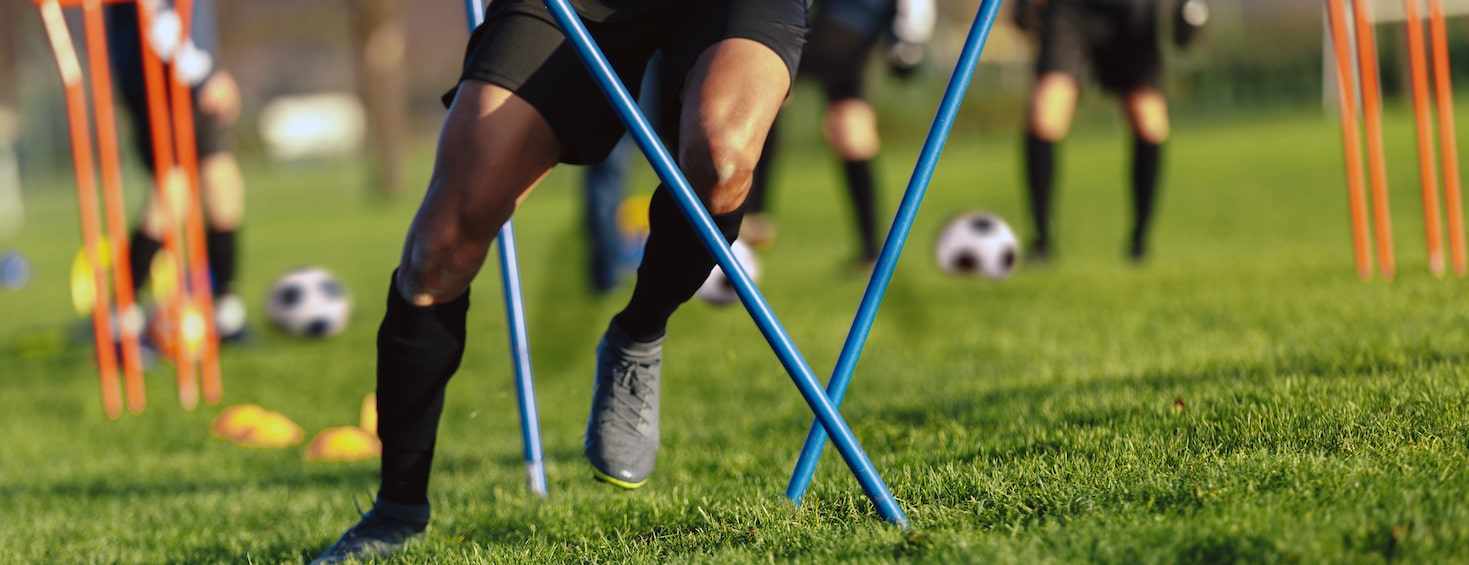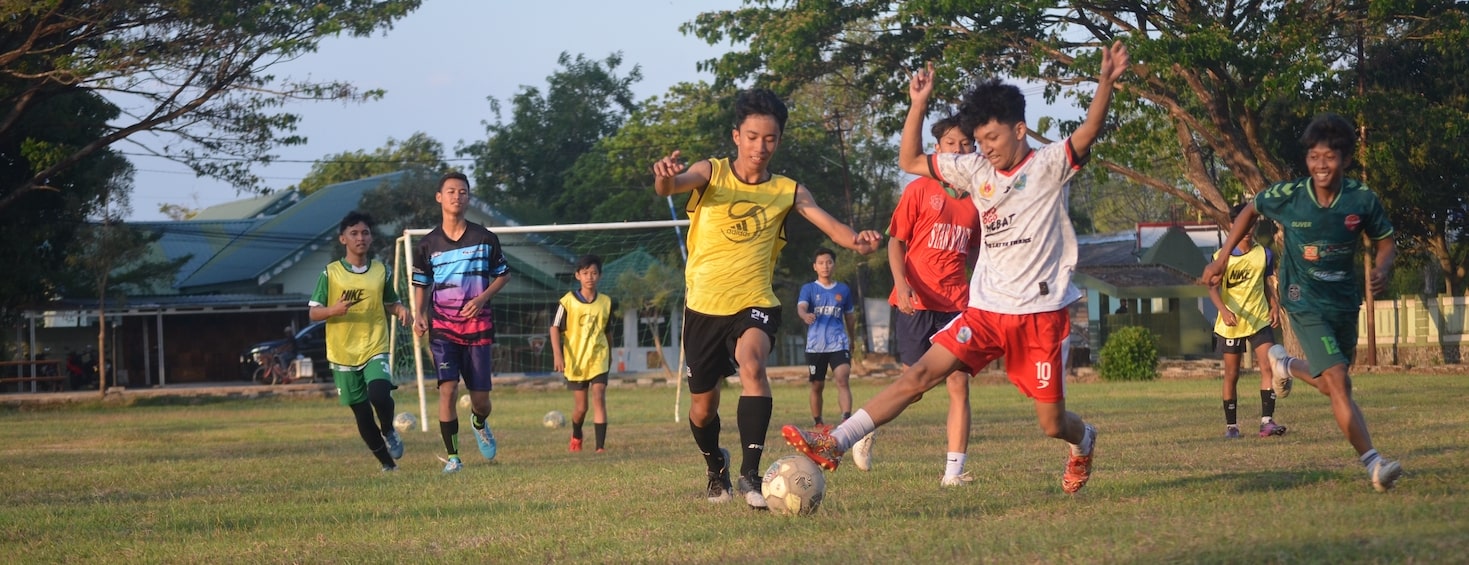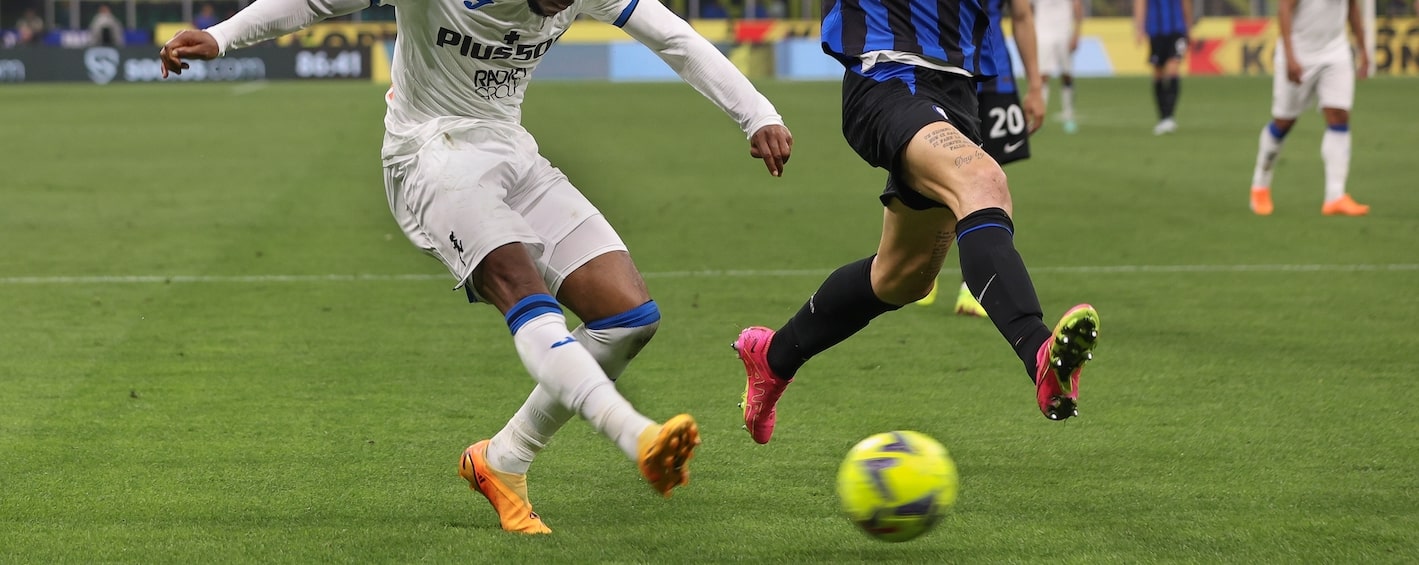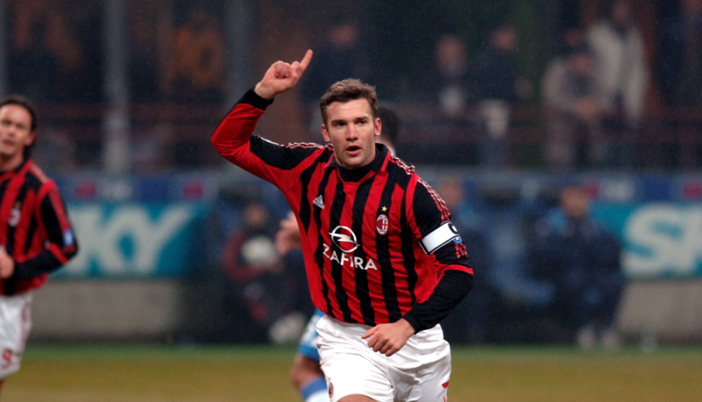In this comprehensive guide, we'll delve into the essential skills required to become a top-notch goalkeeper, how to train effectively, and highlight some of the best goalkeepers currently dominating the field.
Soccer Goalie Skills
-
Shot-stopping: This is perhaps the most fundamental skill for a goalkeeper. It involves the ability to make quick decisions and react swiftly to shots on goal. This includes diving, leaping, and using one's body to block or catch the ball.
-
Positioning: A goalkeeper must have exceptional positional awareness. This means knowing where to stand in the goal to best anticipate and react to shots. Proper positioning can make the difference between making a save and conceding a goal.
-
Distribution: A good goalkeeper is also an effective distributor of the ball. This includes accurate throws, punts, goal kicks, and throws. Being able to accurately distribute the ball can quickly transition the team from defense to offense.
-
Communication: Goalkeepers are often considered the vocal leaders on the field. They have a unique perspective of the game and can see the entire field. Effective communication with the defenders is crucial for organizing the defense and ensuring everyone is in the right position.
-
Aerial Ability: This skill is especially important for dealing with high balls, whether they be crosses, corners, or long shots. A goalkeeper must be confident when coming off their line to claim or punch away these aerial threats.
-
One-on-One Situations: Dealing with one-on-one situations with an attacking player requires a combination of bravery, timing, and reading the opponent's movements. A goalkeeper must be able to stand their ground, narrow the angle, and make themselves big to increase the chances of making a save.
-
Shot Anticipation: Great goalkeepers have an almost uncanny ability to anticipate where a shot will be placed. This comes from reading the body language and footwork of the shooter and being able to react before the ball is even struck.
-
Reflexes: Quick reflexes are vital for a goalkeeper. This involves being able to react rapidly to close-range shots or deflections, often with very little time to think.
-
Mental Toughness: Goalkeeping can be a high-pressure position. Mistakes are often magnified, and the goalkeeper must have the mental fortitude to bounce back from errors and stay focused throughout the game.
-
Fitness and Agility: Goalkeepers need to be agile and have good endurance. They are often required to make explosive movements, such as diving, in quick succession. Additionally, good overall fitness helps with decision-making and concentration throughout the game.
-
Distribution with Feet: In modern football, goalkeepers are expected to be comfortable with the ball at their feet. They often participate in the team's build-up play and need to be able to accurately pass the ball to teammates.
-
Decision-Making: Knowing when to come off the line, when to stay on the line, and when to close down an attacker is a critical aspect of goalkeeping. This decision-making process is often made in a split second and can determine the outcome of a play.
How to Become A Goalie
Embarking on the journey to become a goalkeeper involves a series of strategic steps:
- Master the Basics: Begin with fundamental ball-handling, shot-stopping, and positioning drills.
- Join a Team: Find a local soccer team or club and express your interest in becoming a goalkeeper.
- Enroll in Goalkeeper Clinics: Specialized training sessions to refine your skills and receive expert coaching.
- Study the Greats: Watch and analyze professional goalkeepers to learn from their techniques and decision-making.
Notable Goalkeepers in the Modern Game
-
Manuel Neuer (Germany) - Renowned for his exceptional shot-stopping ability, distribution, and commanding presence in the box, Neuer has been a cornerstone of both Bayern Munich and the German national team.
-
Jan Oblak (Slovenia) - Considered one of the best shot-stoppers in the world, Oblak has been instrumental in Atletico Madrid's successes, known for his incredible reflexes and consistency.
-
Alisson Becker (Brazil) - Alisson has been pivotal in Liverpool's recent successes, known for his excellent shot-stopping and ability to play as a 'sweeper-keeper' by effectively using his feet.
-
Marc-André ter Stegen (Germany) - Known for his exceptional distribution and quick reflexes, ter Stegen has been a key figure for FC Barcelona and the German national team.
-
Thibaut Courtois (Belgium) - Standing at an impressive height, Courtois is known for his commanding presence in the box, exceptional shot-stopping, and precise distribution.
-
Keylor Navas (Costa Rica) - Navas has been a pivotal figure for both Real Madrid and Paris Saint-Germain, known for his acrobatic saves and calmness under pressure.
-
Ederson Moraes (Brazil) - Playing for Manchester City, Ederson is renowned for his superb distribution and ability to start attacks with precise long-range passes.
-
Gianluigi Donnarumma (Italy) - Known for his incredible shot-stopping ability and commanding presence, Donnarumma has established himself as a top goalkeeper at both AC Milan and Paris Saint-Germain.
-
David de Gea (Spain) - For years, de Gea has been a linchpin for Manchester United with his exceptional reflexes and shot-stopping prowess.
-
Wojciech Szczęsny (Poland) - Szczęsny has been instrumental for both Juventus and the Polish national team, known for his agility and consistency.
-
Samir Handanović (Slovenia) - As the captain of Inter Milan, Handanović is celebrated for his leadership qualities, shot-stopping skills, and commanding presence in the penalty area.
-
Kasper Schmeichel (Denmark) - Playing for Leicester City, Schmeichel is known for his agility, leadership, and ability to make crucial saves in important moments.
-
Peter Gulácsi (Hungary) - The Hungarian goalkeeper has been a crucial figure for RB Leipzig in the Bundesliga, known for his quick reflexes and ability to command the defense.
-
Jordan Pickford (England) - Pickford gained international recognition with his stellar performances for England during the 2018 FIFA World Cup. He's known for his agility and shot-stopping.
-
Emiliano Martínez (Argentina) - Martínez made a significant impact for Argentina during the Copa America 2021, showcasing excellent shot-stopping abilities and commanding presence in the penalty area.


Improve Your GameJust 1.99 p/m
Exclusive drills and sessions, get involved today!
- 100’s of Drills
- Coach to Camera Videos
- Sessions from Pro’s
- Industry Leading Advice
Role of A Goalie
The role of a goalkeeper in soccer is undeniably one of the most critical and demanding positions on the field. Often referred to as the "last line of defense," the goalkeeper bears the immense responsibility of safeguarding the team's goal. Beyond the technical skills they possess, the goalkeeper's role is multifaceted and central to a team's success.
At its core, the goalkeeper's primary duty is to prevent the opposition from scoring. This involves keen anticipation, impeccable positioning, and swift reactions to shots. A goalkeeper must be a master of decision-making, assessing when to stay on their line, come out to narrow the angle, or challenge an opponent in a one-on-one situation.
Yet, their responsibilities extend far beyond shot-stopping. Goalkeepers are the eyes and voice of the defense, utilizing their unique vantage point to organize and direct their teammates. They ensure that the backline is properly positioned, marking opponents and closing down spaces effectively. This leadership role requires excellent communication skills, as they provide vital instructions in the heat of the game.
Aerial dominance is another hallmark of a top-notch goalkeeper. They must command their penalty area with authority, confidently claiming crosses and high balls to alleviate potential threats. Timing and judgment are paramount in these moments, as mistimed actions can result in dangerous situations.
Goalkeepers are often skilled distributors of the ball. They act as the initial point of attack, initiating plays with precise throws, punts, and well-placed goal kicks. This ability to distribute accurately and quickly transition from defense to offense is a crucial aspect of modern goalkeeping.
Mental fortitude is a non-negotiable trait for a goalkeeper. They must possess the resilience to weather the intense pressure that comes with the position. Mistakes are inevitable, and a goalkeeper's ability to quickly recover, maintain focus, and exude confidence is pivotal in determining the outcome of the match.
Reading the game is a skill that distinguishes elite goalkeepers. They possess an intuitive understanding of the flow of play, predicting opponents' movements, and preemptively positioning themselves to counter potential threats. This anticipatory ability is honed through experience and acute soccer intelligence.
Furthermore, goalkeepers are integral in set-piece situations. They take charge in defending against free kicks, corners, and other dead-ball scenarios. This involves precise positioning, organizing the defense, and making crucial interventions when needed.
Ultimately, a goalkeeper is not just a player who stops shots. They are the backbone of the defense, a leader on the field, and a catalyst for the team's tactical approach. Their influence is immeasurable, often determining the course and outcome of a match. In the grand theater of soccer, the goalkeeper stands as a sentinel, guarding the team's fortress with unwavering dedication and skill.
Rules for Goalkeepers
Understanding the rules for goalkeepers is crucial for both players and fans of soccer. Goalkeepers have a unique set of regulations that govern their actions on the field. Here's a comprehensive guide to understanding the rules for goalkeepers:
-
Hands and Feet Usage:
- Goalkeepers are the only players allowed to use their hands and arms to play the ball, but there are specific restrictions.
- They can use their hands and arms only within their own penalty area.
-
Penalty Area Restrictions:
- The goalkeeper cannot handle the ball outside of their designated penalty area. If they do, it results in a direct free kick for the opposing team from the spot where the offense occurred.
-
Distribution Rules:
- Goalkeepers have six seconds to release the ball once they have gained possession. This is usually done through throws, punts, goal kicks, or by rolling it along the ground.
- Additionally, goalkeepers cannot deliberately waste time when in possession of the ball.
-
Goal Kick Rules:
- A goal kick is awarded to the defending team when the ball crosses the goal line after being last touched by an attacker. It is taken from anywhere inside the six-yard box.
- The ball must be stationary and on or within the goal area lines when the goalkeeper takes the goal kick.
-
Punt Rules:
- Goalkeepers often use punts to send the ball downfield. The ball must be dropped and struck before it touches the ground.
-
Throw Rules:
- When the goalkeeper throws the ball, it must leave their hands cleanly. It cannot be dropped or palmed out.
- The ball must be released from behind the goalkeeping line (the six-yard box) and within six seconds.
-
Back-Pass Rules:
- Goalkeepers are not allowed to pick up a ball passed deliberately to them by a teammate with their feet. This rule prevents time-wasting tactics.
-
Receiving Passes:
- Goalkeepers can receive passes from their teammates with their feet but are then restricted from using their hands to play the ball. This includes a pass made with any part of the body other than the foot.
-
Dealing with Back-Passes:
- If a goalkeeper receives a back-pass with their feet, they are allowed to pick it up. However, it must be done immediately and the goalkeeper must not delay.
-
Corner Kicks:
- Goalkeepers are not allowed to touch the ball with their hands from a corner kick taken by their own team. The ball must be played by an outfield player before the goalkeeper can use their hands.
-
Free Kicks:
- In situations where a goalkeeper has committed an offense, like a foul on an opponent, the opposing team is awarded a free kick from the spot of the foul.
-
Time-Wasting:
- Goalkeepers are not allowed to waste time intentionally. This includes actions like holding onto the ball excessively or delaying restarts.
Positioning Strategies for Goalkeepers
Positioning is a critical aspect of a goalkeeper's role in soccer. It not only influences shot-stopping but also impacts the goalkeeper's ability to command their penalty area and organize the defense effectively. Here are some key positioning strategies for goalkeepers:
-
Near Post Dominance:
- One fundamental positioning strategy is to prioritize the near post. By positioning themselves slightly towards the near post, goalkeepers reduce the angle of attack for the shooter, making it harder to score.
-
Angle Play:
- Goalkeepers need to be adept at cutting down angles. This involves positioning themselves in a way that narrows the available space for the shooter, making it more challenging to find the net.
-
Depth in the Goal:
- Determining the appropriate depth in the goal is crucial. Goalkeepers must strike a balance between being close enough to react to shots quickly and being far enough to cover more ground.
-
Starting Position in Set Pieces:
- During free kicks and corner kicks, the goalkeeper's starting position is crucial. They must weigh the risk of staying on their line against coming out to claim the ball or cut off potential passes.
-
Positioning Relative to the Ball:
- Goalkeepers must position themselves according to the ball's location. They need to anticipate where the ball might end up based on the play's trajectory.
-
Reading the Game:
- Experienced goalkeepers read the game well. They can anticipate passes, crosses, and shots, allowing them to adjust their positioning before the ball is even played.
-
Shift with Play:
- Goalkeepers should shift their positioning as the play develops. This could involve stepping to the side to close down an angle, or coming off the line to challenge an oncoming attacker.
-
Commanding the Penalty Area:
- Goalkeepers need to assert themselves in the penalty area. This includes being vocal in organizing defenders, positioning them effectively, and making sure they mark their opponents closely.
-
Adapt to Attacking Styles:
- Different teams have varying styles of play. Goalkeepers must adapt their positioning to counter the specific threats posed by the opposing team.
-
Maintaining Optimal Positioning After Saves:
- After making a save, goalkeepers must recover quickly and reposition themselves for any potential follow-up shots or plays.
-
Positioning for One-on-One Situations:
- In one-on-one situations, goalkeepers should aim to close down the attacker's angles while staying patient and making themselves as big as possible.
-
Adjusting for Crosses and Corners:
- During crosses and corners, goalkeepers should assess the flight of the ball and position themselves to either catch or punch it away, while also being prepared for any deflections.
-
Stay Central and Balanced:
- Staying centered in the goal and maintaining a balanced stance is crucial. This allows goalkeepers to react quickly in any direction.
-
Stay on Feet When Appropriate:
- While diving is a crucial skill, goalkeepers should avoid going to ground unnecessarily. Staying on their feet can give them more options and agility in certain situations.
-
Communicate with Defenders:
- Clear communication with defenders helps in determining positioning for both the goalkeeper and the backline. This ensures that everyone is aligned and covering the necessary areas.
Effective positioning can greatly enhance a goalkeeper's ability to make saves and command the penalty area. It requires a deep understanding of the game and the ability to read plays as they unfold. By employing these positioning strategies, goalkeepers can become formidable assets to their teams.




Cupello
Rethinking soccer coaching via our industry leading tools. Built to offer effective coaching development solutions for players and coaches of all levels.